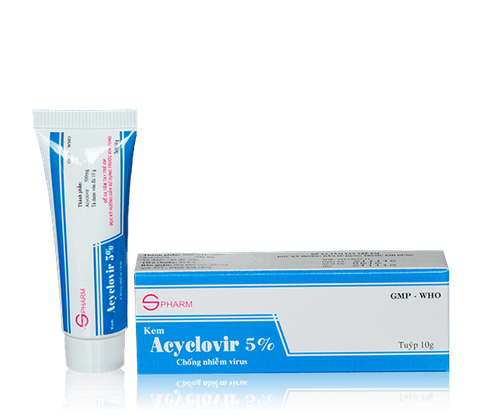This is an automatically translated article.
Lamitic medicine belongs to the group of antiviral, anti-infective, anti-parasitic drugs, containing the main ingredient is Lamivudine. The drug is effective in the treatment of chronic hepatitis B with high liver enzymes, cirrhosis, necrotizing inflammation, liver transplant patients,...
1. What is Lamitic?
Lamitic medicine is an Indian pharmaceutical product, is an antiviral drug with the ingredient Lamivudine, effective in the treatment of chronic hepatitis B in people aged 16 years and older when there is evidence of hepatitis B virus replication. and progressive hepatitis.
Lamivudine is an antiviral drug with high activity against hepatitis B virus. The drug is metabolized by both infected and uninfected cells to the TP (triphosphate) derivative, the active form of the parent drug. The intracellular half-life of triphosphate in hepatocytes is approximately 17-19 hours. Lamivudin-TP acts as a substrate for the polymerase of HBV hepatitis viruses. Subsequent formation of viral DNA is blocked by the incorporation of lamivudin-TP into the strand, resulting in chain termination. After oral administration, Lamivudine is well absorbed, bioavailability of lamivudine in adults is usually between 80-85%. Drugs metabolized by the liver are low (about 5 - 10%) and the rate of drug binding to plasma proteins is low, so the potential for interactions with other drugs metabolized with lamivudine is low. The observed half-life of the drug is approximately 5 to 7 hours. Lamitic is eliminated mainly by renal cells as unchanged drug under active excretion by the organic cationic ion transport system.
2. Indications and contraindications of Lamitic
2.1. Indications Lamitic is indicated in the following cases:
Chronic viral hepatitis with evidence of HBV replication (hepatitis B) with one or more of the following signs: Enzyme tests ALT in the blood is 2 times higher than normal. Decompensated or compensated cirrhosis. Biopsy showed hepatocellular necrosis. Immunocompromised people. The patient received a liver transplant. Combination drugs in the treatment of HIV virus infection. 2.2. Contraindications Do not use Lamitic in case the patient is allergic to Lamivudine and excipients.
3. How to use and dose Lamitic
How to use: Lamitic is used orally.
Dosage: Based on the patient's weight and age, the doctor will assign an appropriate dose of the drug or readers can refer to the recommended dose of the drug by age as follows:
Adults and children over 12 Age: Recommended dose: Take 100mg once a day. The drug should be discontinued in patients with a normal immune response when an HbsAg and/or HBeAg seroconversion response occurs. Children under 12 years of age: Dosage: Take a single dose of 3mg/kg, up to a maximum of 100mg per day. Patients with renal failure need to reduce the dose of Lamitic. Recommended dose:
People living with HIV: Adults and people 16 years of age and older: Weight 50kg or more: 150mg Lamivudine every 12 hours. Weight less than 50kg: take the dose according to the formula 2mg/kg, every 12 hours. Teenagers from 12 to 16 years old: Weight over 50kg: Take 150mg of Lamivudine, every 12 hours. Weighing less than 50kg: There are currently no adequate data on dosing instructions. Children from 3 months to 12 years old: Oral dose according to the formula of 4mg Lamivudine/kg, every 12 hours, maximum dose of 300mg drug per day. People with chronic hepatitis B virus disease: Adults: 100mg orally once a day. Children over 2 years old: Oral dose of 3mg/kg, once a day, maximum dose of 100mg per day. Patients with renal failure: Need to reduce the dose according to the doctor's instructions
Patients infected with both HIV and hepatitis B virus: Take the drug according to the antiretroviral dose of HIV. Overdose: Very little is known about overdosage, although no clinical signs or symptoms have been observed in overdose, and blood tests are normal. No antidote has been found and it is not known whether lamivudine is eliminated by peritoneal dialysis or hemodialysis.
When an overdose occurs, ask the patient to immediately go to the nearest medical facility for appropriate and timely treatment by medical staff.
4. Undesirable effects when using Lamitic
Undesirable effects during the use of Lamitic include:
Common: Headache, insomnia, body malaise, fatigue, dizziness, depression, chills, fever, nausea or vomiting. vomiting, abdominal pain, diarrhea, anorexia, dyspepsia, increased amylase, paresthesia, peripheral neuropathy, arthralgia, myalgia, nasal signs and symptoms, cough, leukopenia on blood tests neutropenia, increased liver enzymes AST, ALT, anemia. Uncommon: Pancreatitis, laboratory tests show thrombocytopenia, increased bilirubin in the blood. Lamitic should be discontinued immediately if clinical signs, symptoms, or laboratory findings suggestive of pancreatitis occur.
Inform the doctor about the unwanted effects that the patient encounters when using Lamitic medicine.
5. Lamitic drug interactions
Zidovudine blood levels are significantly increased (approximately 39%) when it is co-administered with Zidovudine. Trimethoprim / Sulfamethoxazole antibiotics increase bioavailability (44%) and decrease renal clearance (30%). Absorption of the drug is slowed and peak plasma concentrations are 40% lower when Lamitic is administered on full stomach than when Lamitic is administered on an empty stomach.
6. Notes in the process of using Lamitic
Notes when patients use Lamitic include:
After stopping the drug, the patient may have a relapse of chronic hepatitis B. Patients need periodic clinical monitoring and liver function assessment by laboratory tests for at least 4 months to look for evidence of recurrent hepatitis B. In children with a history of pancreatitis or with other risk factors for the development of pancreatitis, the combination of lamivudine and zidovudine requires close monitoring. When there are clinical signs, or abnormal test results suggest pancreatitis, the child needs to stop taking the drug immediately. In patients with impaired renal function, children under 12 years of age, and adolescents weighing less than 50 kg, a combination product containing lamivudine and zidovudine should not be used. Lamitic oral dose should be maintained at 150mg each time, twice a day in patients with HIV infection. The drug does not cure HIV infection, the patient continues to carry the disease caused by HIV infection, including the risk of opportunistic infections. Patients need to be monitored and cared for continuously. Pregnancy: The drug can be used during pregnancy, especially when there is a chance of protection from infection to the fetus. In case of taking Lamivudine in combination with oral administration (such as Lamivudine and Zidovudine tablets), it should be avoided in pregnant women. Lactation: Although it is not known whether Lamitic is excreted in human milk, there is the potential for adverse drug reactions in nursing infants. Because of the high risk of HIV transmission through breastfeeding, HIV-infected mothers are strongly advised not to breastfeed. Above is information about Lamitic drug. Medicines are prescribed, patients should not arbitrarily use Lamitic drugs without indications. The drug has anti-viral effects, treating hepatitis B virus infection and in combination when the patient has HIV. If the patient has any questions about Lamitic, please consult a specialist doctor, pharmacist.













